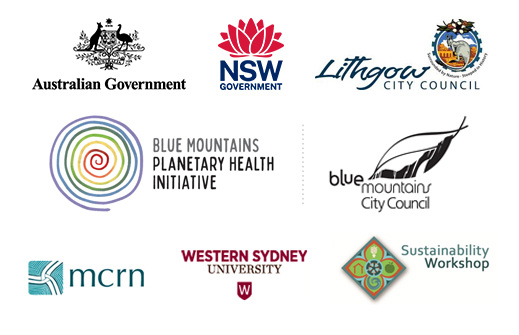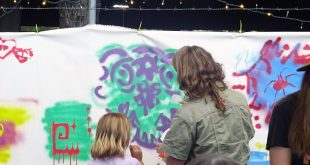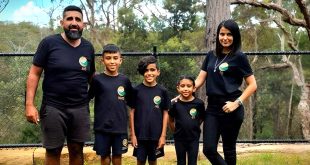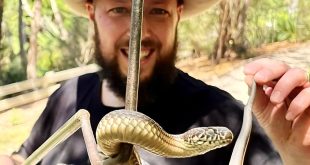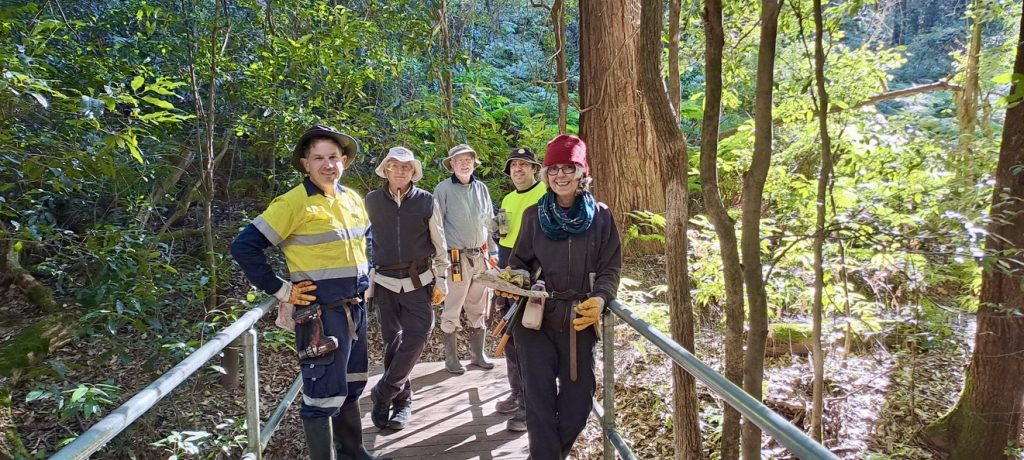
A Council remote Bushcare group at Birdwood Gully, Springwood, July 2023 (Tracie McMahon)
By Tracie McMahon
Planetary Health Initiative writer Tracie McMahon talks about her experience as a Bushcare volunteer with Remote Bushcare programs run by Blue Mountains City Council and by the National Parks and Wildlife Service. These programs are protecting habitat for koalas and other species, and ensuring we protect our native biodiversity.
Writing is my weekday job and, as strange as it may seem, the reason I became a Bushcare volunteer.
When I began writing in 2021, I would spend hours crafting words, hoping to bring the stories of nature to life through fiction. Fiction writing is competitive, and I aimed high. I planned to enter a competition for Island, an Australian literary magazine for nature writers, and enrolled in a pre-competition webinar to hone my entry. At the end of the webinar, an attendee asked: “Does writing about nature really make a difference?” The panellist replied that whenever he questioned his work, he went out and pulled a few weeds with his local Bushcare group. It reminded him that both actions and words are important.
The next day when I sat down to write, I also sent an email to my local National Parks and Wildlife Service office to ask about weeding. I’m a bushwalker and spend a lot of time in the Grose Valley so that seemed a good place to start. The ranger was quick to reply and asked if I wanted to join the remote team.
Remote Bushcare involves working in areas which are usually at least thirty minutes from emergency assistance. The work requires high levels of fitness as it can involve bush bashing, scrambling, rock hopping, working in creeks and camping. It also involves visiting some of the most beautiful places in the Blue Mountains, many of which are only accessible to remote groups.
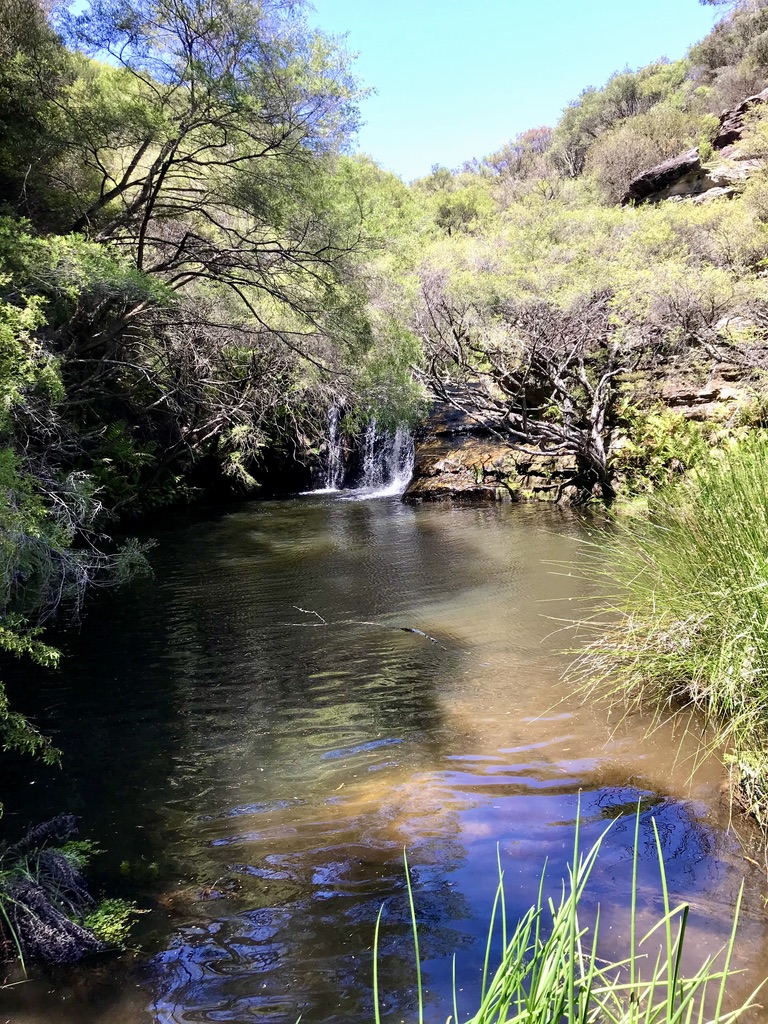
A waterfall on Katoomba Creek. The group checks the edges for weeds to ensure they do not flow further downstream. (Tracie McMahon)
In September 2021, I joined the Great Grose Weed Walk for National Parks and became a remote Bushcare volunteer. This program has been in operation across the Blue Mountains for over two decades. At the time, the Black Summer bushfires of 19/20 followed by flood, had revealed a seed bed of Gorse and Broom which was previously considered under control. Without the cover of natives, the weeds were sprouting and threatening to take over the Grose Valley.
Our group of six camped near Acacia Flat for three days, criss-crossing Acacia Flat and Govetts Creek to remove Gorse and Broom seedlings. Each was only a few centimetres high, but the ground itself was bare, making them relatively easy to spot. The ranger and more experienced bushcarers provided training to identify and treat the weeds appropriately.
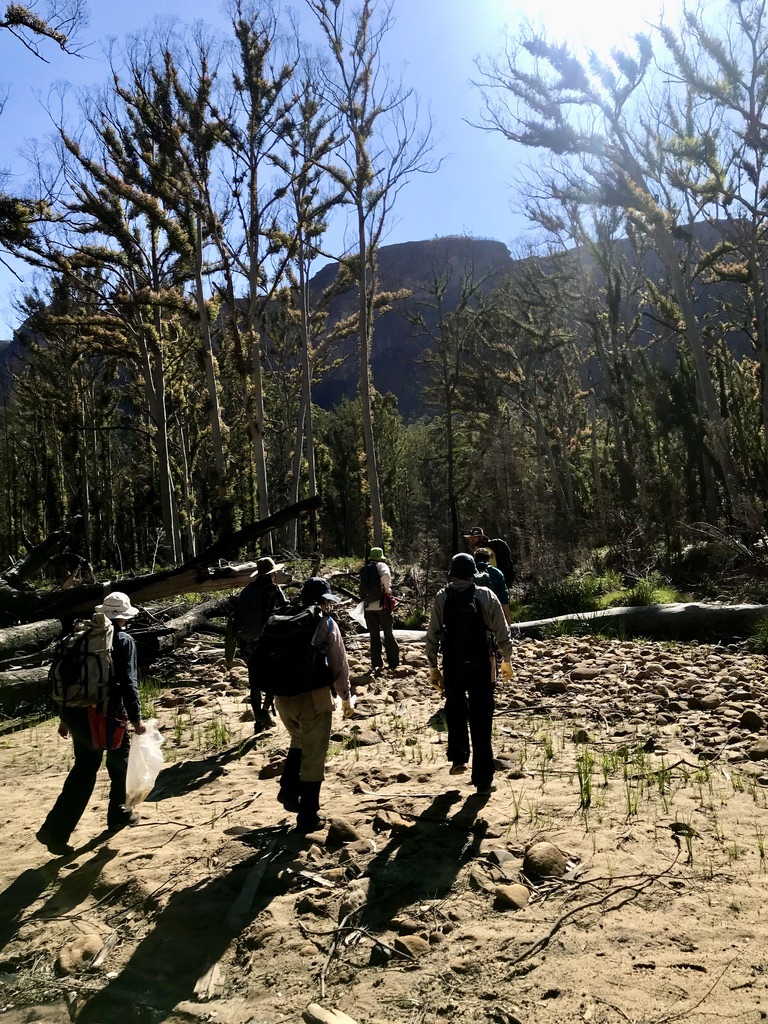
The National Parks and Wildlife Bushcare team on the banks of Govetts Creek in the Blue Gum Forest ready for a day’s work October 2021. (Tracie McMahon)
My first year as a remote Bushcare volunteer was revelatory. I was learning about native flora not from books and pictures, but with all my senses. The National Parks and Wildlife staff and other volunteers would take the time to point out the smell and the feel of the weeds, and how they can be differentiated from native flora. Everyone was happy to answer my many questions and discuss their own experiences. My fellow volunteers were a diverse lot. Many had science and ecology backgrounds, but there were teachers, lawyers, business managers and students, eager to get away from their desks.
Remote Bushcare activities usually operate on weekends and are seasonal or monthly, so people with weekday commitments can participate. The three-day camp at Acacia Flat is one of my favourite activities, particularly as it has allowed me to see the Blue Gum Forest recover after the recent fire and flood events. On our last trip in March 2023, Gorse and Broom were no longer the priority. Crofton and Himalayan Honeysuckle are now the focus.
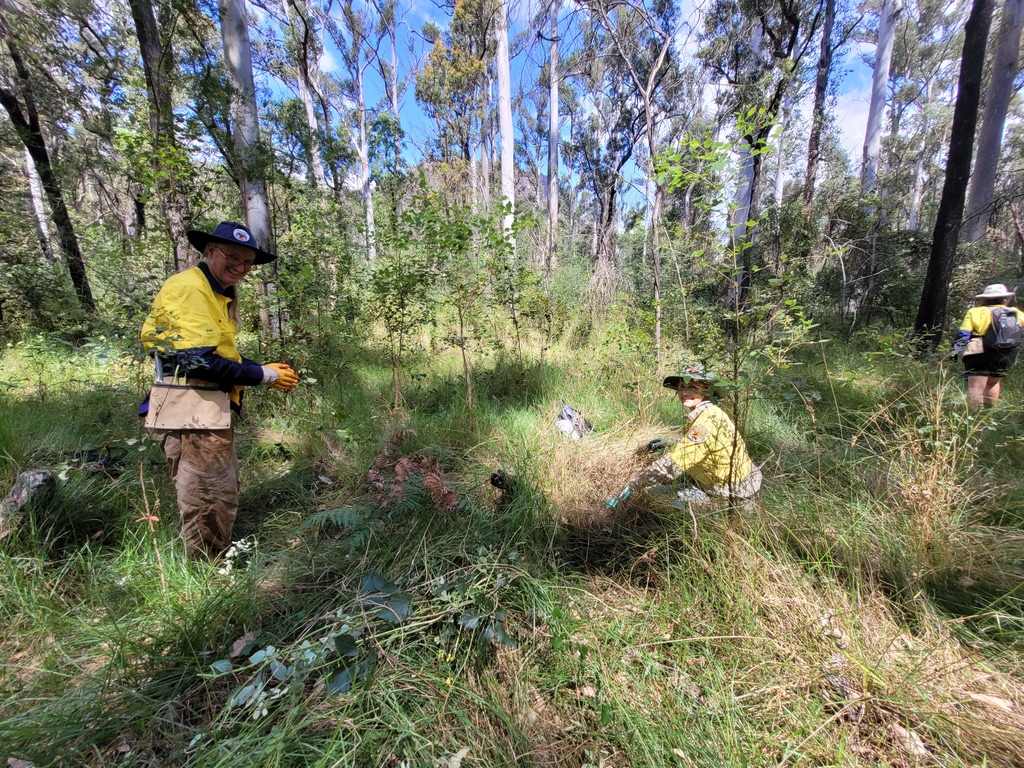
National Parks and Wildlife Service Bushcare team treating Crofton in the Blue Gum Forest March 2023 (Supplied NPWS)
Blue Mountains City Council also has a remote Bushcare program which operates monthly. The sites vary each year, depending on anticipated infestation and time since the team last ‘worked’ the area. Sites can involve rough inaccessible terrain like Katoomba Creek or an offtrack bushwalk at Mount Wilson.
Steve Fleischmann, Bushcare Officer at Blue Mountains City Council explains that the goal of the remote program is to “keep an eye on” areas where problems can eventuate including sites of high ecological value. He says it is like “infection control in hospitals.” The topography of the mountains, as well as proximity of natural areas to urban settlement, can result in waterways becoming ‘vectors’ for invasive species to enter bushland reserves and national parks.
Other sites have critical species populations or habitats. For example, Knapsack Gully in Glenbrook is a part of an endangered shale-sandstone transition forest, a unique ecological community found only in the Sydney Basin of NSW, and Burgess Falls in Hazelbrook has an extensive and diverse mycological (fungi) ‘forest’.
The remote program allows Blue Mountains City Council to target their resources to optimise their awareness of problems and be prepared to act quickly.
I’ve managed to get to two of their events this year and was fortunate to be introduced to unfamiliar terrain in the lower mountains. The Bushcare Officers happily shared their knowledge while we worked, from the fungi on the forest floor to the bush tucker dangling overhead.
At Burgess Falls in Hazelbrook, activities were focused on arum lily. The lily, which is common in household gardens, had made its way into the bush and was blocking the flow of water through the creek.
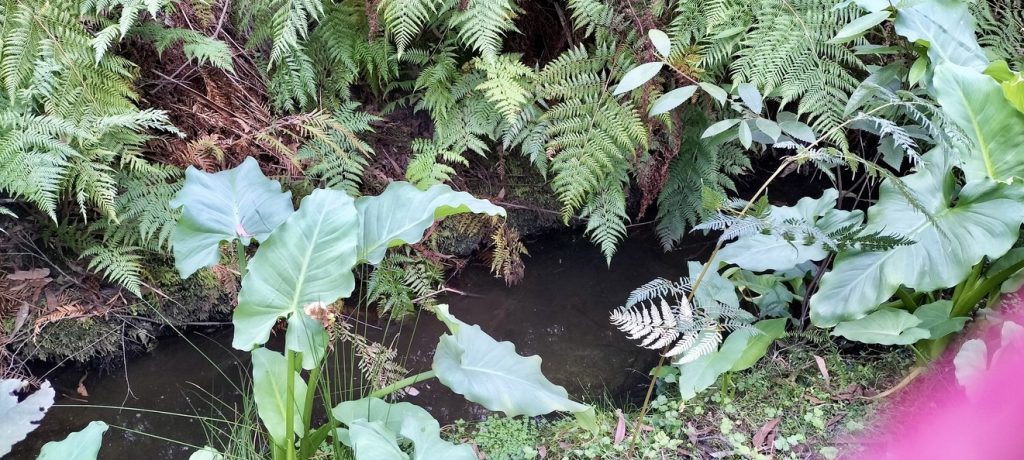
Arum lily in Burgess Creek, blocking the flow of the creek (Tracie McMahon)
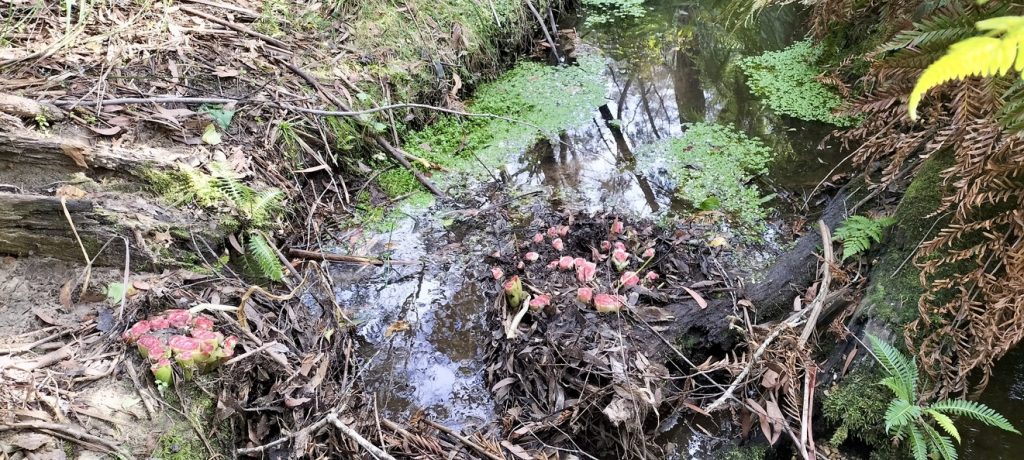
The lily is removed and treated to ensure the creek can flow effectively (Tracie McMahon)
In Birdwood Gully, Springwood, the Bushcare group were trained to treat large privet, using drills and chisels. The remote team had visited the area last year and this was a follow up to check on the impact of the previous work and expand from there.

Bushcare Officer Steve Fleischmann demonstrating how to treat a large privet (Tracie McMahon)
As we chatted over lunch at Springwood this month, I asked the group about other sites they have visited during the year. At Knapsack Reserve in Glenbrook, the group tell me they had only travelled a hundred metres before being faced with a “wall of Lantana”. This site is home to a known Koala population and is also a critical ‘vector site’.
Steve explains that African Olive, Lantana, and Ochna are frequently found in this area distributed by bird droppings. Each of these species can out-compete native species ‘simplifying’ the landscape, which means an abundance of those species that can co-exist with them and a loss of diversity within the ecosystem. This endangers the endemic flora and fauna, including the Koalas. The group of eight worked on the Lantana, making a substantial difference to the area and the site will be revisited to ensure the treatment is effective.
At Mount Wilson earlier in the year, the site was relatively weed free and the team instead enjoyed a stunning guided bushwalk through the rainforested area, with explanations from the Bushcare Officer.
Steve Fleischmann explained that even though they found very little at Mt Wilson, this is still a good use of volunteers’ time. It is far better to keep visiting the offtrack areas of sites that are known to have problems or that are high impact, than to wait until someone reports a problem in an area which is walked regularly. Often the weed sighting that is reported is just the tip of the iceberg. By going offtrack and checking regularly, Blue Mountains City Council can treat infestations before they take hold and move into areas which are completely inaccessible.
National Parks and Wildlife also focus on ensuring weeds are stopped before they travel into inaccessible locations. Their remote program includes activities from the headwaters of the Grose at Mt Victoria through to the edge of the Grose Valley wilderness.
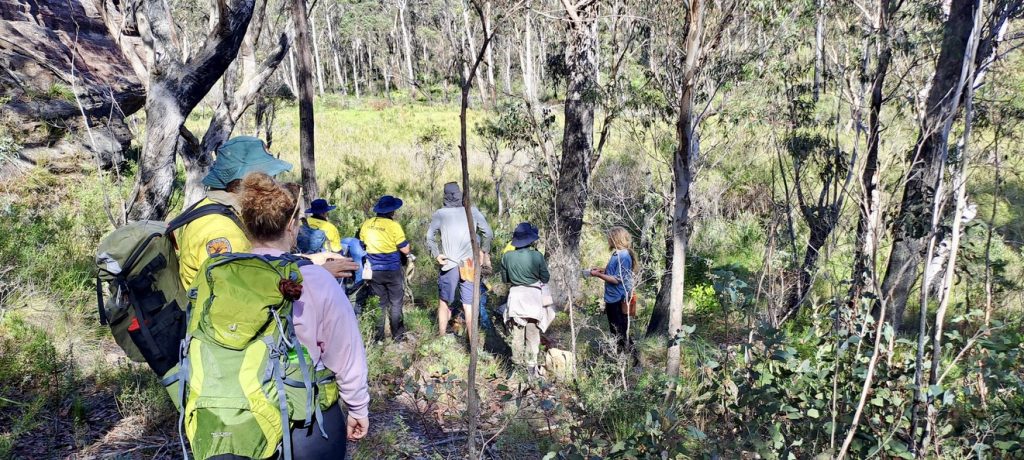
The National Parks and Wildlife Service Bushcare group heading into the site at the headwaters of the Grose in Mt Victoria (Tracie McMahon)
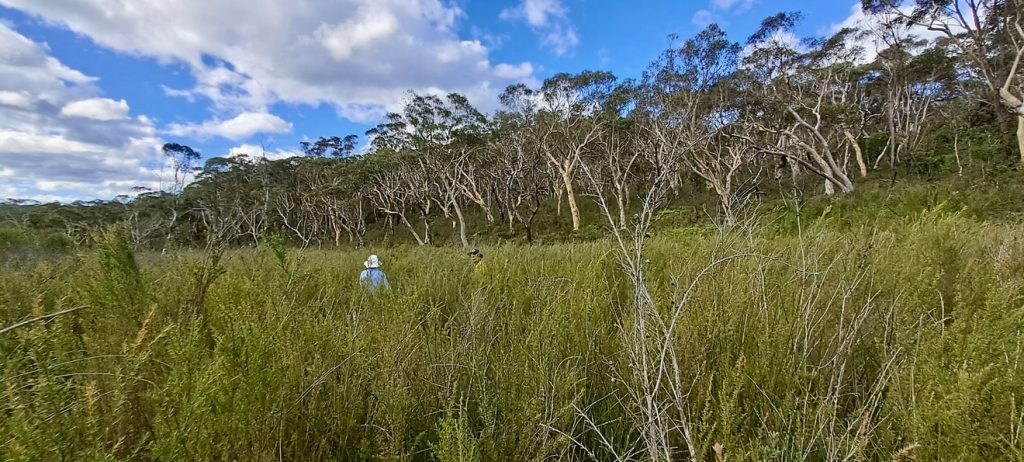
The groups working their way through the swampy terrain at the headwater, removing Crofton weed and Himalayan Honeysuckle in April 2023. (Tracie McMahon)
During a thank you event in June, Monica Nugent, Senior Field Officer at the National Parks and Wildlife Service, explained the importance of volunteers to weed management in the National Park. Volunteers in the Upper Mountains Area contributed almost 3,000 hours of bush regeneration during the previous year, allowing National Parks to target their own activities to sites noted by the volunteer teams for intense work or follow up.
As I tap out the last few words of this article, I am thankful for the gentle reminder of that panellist from the Island webinar. I am grateful that I am physically able to volunteer for the remote Bushcare program, but also that I have the opportunity to share that experience with words.
Blue Mountains City Council Remote Bushcare is now a regular group on the 2nd Saturday of the month. It is organised by Steve Fleischmann, who can be contacted by email: sfleischmann@bmcc.nsw.gov.au.
For the National Parks and Wildlife Service remote Bushcare program, Monica Nugent can be contacted by phone on 4787 8877 or email monica.nugent@environment.nsw.gov.au.
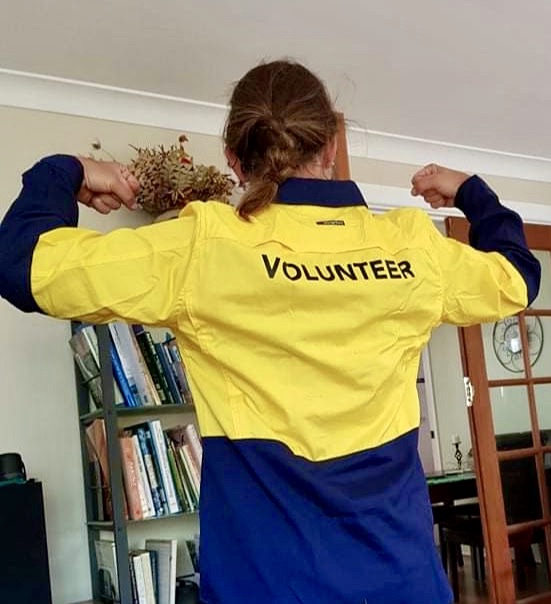
The author modelling her first National Parks and Wildlife Volunteer Bushcare shirt. A very proud moment!
This story has been produced as part of a Bioregional Collaboration for Planetary Health and is supported by the Disaster Risk Reduction Fund (DRRF). The DRRF is jointly funded by the Australian and New South Wales governments.
